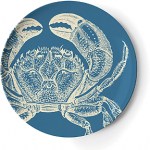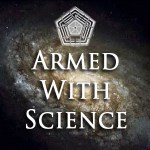Science
tags: Birdbooker Report, bird books, animal books, natural history books, ecology books
"One cannot have too many good bird books"
--Ralph Hoffmann, Birds of the Pacific States (1927).
The Birdbooker Report is a special weekly report of a wide variety of science, nature and behavior books that currently are, or soon will be available for purchase. This report is written by one of my Seattle birding pals and book collector, Ian "Birdbooker" Paulsen, and is edited by me and published here for your information and enjoyment. Below the fold is this week's issue of The Birdbooker Report which…
The monthly Sigma Xi email newsletter for April included a link to Magic World Media, a new company producing children's books about science:
Magic World Media was founded in 2008 by scientists in order to offer children a view into the mysterious ways of life and the universe through books and other forms of media. Our goal is to nurture the imagination and wonder of young children by introducing them to the world that exists beyond the limitations of our senses and, importantly, exposing them to the vastness of what is still unknown. Our books generally place the child at the center of a…
One of the most common refrains from advocates of pseudoscientific and paranormal ideas is that critics are "close-minded," that they reject out of hand any idea that does not fit within their world view. Of course, this is a canard, given that science thrives on the open and free exchange of ideas, and it is not "close-mindedness" that (usually) leads to the rejection of dubious claims. Rather, it is the knowledge that, for many of such claims to be true, huge swaths of our current scientific understanding would have to be in error to such an extent that a major paradigm shift in various…
Over at his new digs, Chris Mooney talks about efforts to re-launch the OTA:
I’m starting to detect some buzz on this very important front, which I wrote about in detail in 2005’s The Republican War on Science and elsewhere. Basically, the story is this: In 1995 the Gingrich Republicans, looking to slash budgets–and looking askance at science in general in many areas–got rid of their scientific advisory office, which had been in existence since 1972 and had become world renowned not only for accurate studies, but for far-ranging analyses that forecast future science and technology problems…
In the wake of the Virginia Tech shootings, we instituted a complicated emergency alert system, involving sirens, loudspeakers, text messages, and emails. The whole thing gets tested far more frequently than it really needs to-- every few weeks, we get a barrage of emails warning us that a test is coming up, then another barrage of emails and text messages on the day of the test.
The system has been used exactly once, and it was a fiasco. A year or so ago, we got a flurry of messages telling us that there had been a shooting a couple of blocks from campus. These directed everyone to a web…
I found this video to be very entertaining.
Dry Ice is LEEEEEEATHALLY DAAAANGEROUS? - These bloopers are hilarious
William Beaty's site has tons of great stuff - http://www.amasci.com/
Lately, I've been seeing a lot of dinnerware that's just too fascinating to cover with food. Like Hiroshi Tsunoda's Bodylicious plates, available at DesignCode. According to Street Anatomy, Tsunoda was
inspired by Nyotaimori, a tradition where food is presented on a naked woman's body and used as a tray. Nyotaimori is also referred to as body sushi, and requires the person to practice laying for hours without moving.
Wow, I'm not sure what to say. But at least the plates are equal opportunity: there's a Bodylicious Y set too!
Moving from Homo sapiens to marine invertebrates, these…
The history of venoms is a wonderful example of an evolutionary process. We're all familiar with the idea of venomous snakes, but the cool thing is that when we examine exactly what it is they're injecting into their prey, it's a collection of proteins that show a nested hierarchy of descent. Ancient reptiles had a small and nasty set of poisons they would use, and to improve their efficacy, more and more have been added to the cocktail; so some lizards produce venomous proteins, while the really dangerous members of the Serpentes produce those same proteins, plus a large array of others.…
Physics World this month has a nice article by Robert Crease on the strategies used in popular physics books, drawing on a study of popular books by Elizabeth Leane (Reading Popular Physics, much of which is available via Google Books). He talks about three different strategies that she identifies, and how they're employed in different fields. I was particularly amused by this:
Explaining quantum theory, for instance, seems both to require and to shipwreck metaphors — for what is “down there” just does not behave like what is “up here”. A common tool is to anthropomorphize, personifying…
The spring round of the Adopt-a-Physicist outreach program will begin soon. I did this in the Fall, and it was a good experience, so I've registered myself again.
The program pairs volunteer physicists with high school classes, and provides a web forum in which students can ask questions about physics and careers in physics. Back in the fall, the students I communicated with asked smart and interesting questions, and it was a pleasure to talk to them.
If you have a degree in physics (undergraduate or graduate), and would like to help encourage high school students to consider physics, you…
Kalathomyrmex emeryi (Forel 1907), Argentina.
In Zootaxa last week, Christiana Klingenberg and Beto Brandão introduced to the world an entirely new genus of fungus-growing ant, Kalathomyrmex. Yet the single species, K. emeryi, is a widespread neotropical insect that has been known for over a century. In fact, I photographed it twice during my recent trip to Argentina. How does this happen, a new genus devoid of novel species?
The answer is understandable in light of the distinct pattern of evolution among the fungus growing ants, revealed in a 2008 study by Ted Schultz…
This afternoon NPR is running an entertaining bit on Ed Wilson's research on how ants identify their deceased nestmates.
Plus, they seem to have made a LOLant out of one of my Odontomachus photos.
A fish is a fish, right? They're just a blur of aquatic beasties that most people distinguish by flavor, rather than morphology or descent. But fish are incredibly diverse, far more diverse than terrestrial vertebrates, and there are significant divisions within the group. Most people know of one big distinction, between the Chondrichthyes (fish with cartilaginous skeletons, like sharks and rays) and the Osteichthyes (fish with bony skeletons), but there's another particularly interesting split within the Osteichthyes: the distinction between Sarcopterygians (the word means "fleshy fins",…
Enough.
I don't know about you, but as a surgeon and a biomedical researcher, I'm fed up with animal rights terrorists who threaten biomedical research with their misinformation about animal research, their terroristic attacks on scientists who engage in such research, and listening to the despicable self-righteous idiot who is a disgrace to surgeons everywhere, Dr. Jerry Vlasak, spouting off about how assassinating researchers who use animals as part of their research would be justified.
And apparently I'm not alone. Scientists at UCLA, which, along with UC Santa Cruz, is at ground zero for…
My friend John Ohab is hosting a new DoD webcast called "Armed With Science." Sure, it has an over-the-top logo reminiscent of the Syfy Channel (I like to intone "ARMED WITH SCIENCE" with the same cadence as "PIGS IN SPACE!"), but the show turns out to be really well-done and interesting. Each episode is a half-hour interview with a researchers in a scientific field relevant to the military: sometimes that means SONAR or geopositioning, but they also take on general science topics like Brain Awareness Week at the National Museum of Health and Medicine. It's a nice mix of topics, and it's…
Steven Simon from Oxford University gives the Director's Blackboard Talk:
"Interesting and Useful" (video and podcast)
This is the final report on my modern physics class from last term, covering the last week of classes, which generally deal with nuclear and particle physics. This was actually three-and-a-bit classes, because I lost one class to a nasty cold a few weeks earlier, and used part of the lab period to make up for it.
Class 28 was actually taught by a colleague of mine (thanks, Rebecca!), because Kate and I were in Boston for her father's wake. She taught off my notes, though, so I'll still report it as if I did the class.
This class opens with a brief return of the historical treatment of the…
In the last course report post, we dispensed of atomic and molecular physics in just three classes. The next three classes do the same for solid state physics.
Class 25 picks up on the idea of basic molecular potentials from the end of the previous class, and uses that to introduce energy bands in a qualitative manner. Bringing two atoms together splits the electron levels into two states, adding a third adds more closely spaced levels, and so on. Every time you add more atoms, you add more closely spaced energy levels, and as you approach truly macroscopic systems, those states run together…
A few days ago I wrote about The Problem of the Problem of Motherhood in Science, a post inspired by Meg Urry's book review of Motherhood, the Elephant in the Laboratory by Emily Monosson. A vigorous discussion ensued in the comments - thank you all for participating! It turns out the author of the book was paying attention, and she contacted me by email. Emily Monosson told me she feels her book was misrepresented in Meg Urry's review. I agreed to post here the contents of her email to me.
Here's the email:
I am writing, as editor of Motherhood the Elephant in the Laboratory, in…
SEEDmagazine.com interviews Carl Bergstrom, whose eigenfactor project uses citation databases to map networks of information sharing within science:
We find papers to read by following citation trails. If you have an eigenfactor of 1.5, it means 1.5% of the time, a researcher following citation trails is actually trying to get an article from your journal. . . How do you make the right connections, right? How do you make the critical connections to move thought forward? If you can solve a problem like that, or even just make a little contribution to it, it really accelerates science in a…


